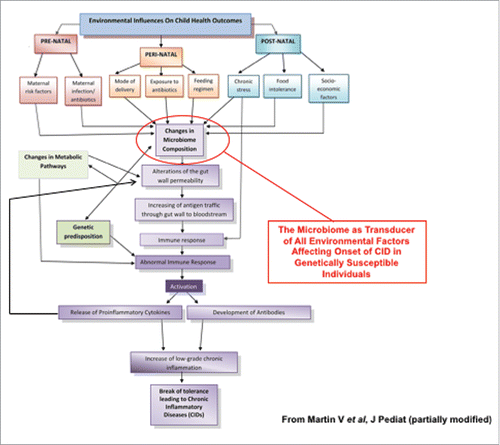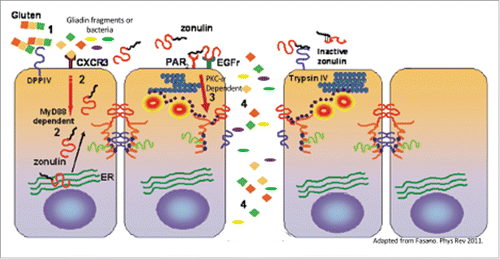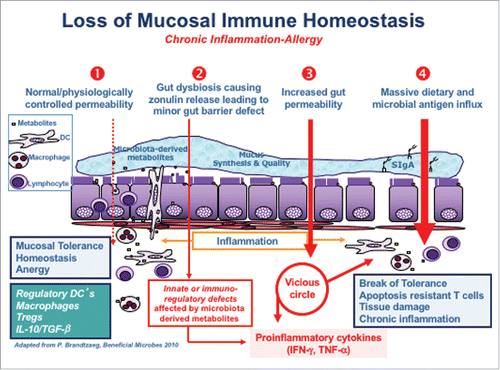Figures & data
Figure 1. Proposed effect of environmental stimuli causing changes in microbiome composition leading to CIDs. Pre-, peri-, and/or post-natal environmental factor can affect microbiota composition causing loss of barrier function, increased antigen trafficking, and altered immune response in genetically susceptible individuals eventually leading to the onset of CID.

Figure 2. Mechanism of gliadin- and bacteria-induced zonulin release and subsequent increase in intestinal permeability. Gliadin specific peptides or bacteria (1) cause a CXCR-3-mediated, MyD88-dependent zonulin release (2). Zonulin transactivates EGFR through PAR2 leading to PCK-α dependent tight junction disassembly (3). Increased intestinal permeability leads to paracellular passage of non-self antigens (4) into the lamina propria where they are able to interact with the immune system.

Figure 3. Proposed mechanism of zonulin in causing loss of barrier function leading to development of CID. Normal barrier trafficking of non-self antigens (antigen sampling), together with specific gut-associated lamina propria cells and cytokines micro milieu leads to mucosal tolerance (1). Environmental stimuli cause microbiome imbalance triggering zonulin release (2) leading to increased antigen influx from gut lumen to the lamina propria (3). Antigens in the lamina propria activate the immune system causing IFN-γ and TNF-α release further exacerbating the increased gut permeability and immune response (4). This leads to a vicious cycle which causes break of tolerance and ultimately, onset of CIDs in genetically predisposed individuals.

Table 1. List of CIDs in which zonulin has been implicated.
